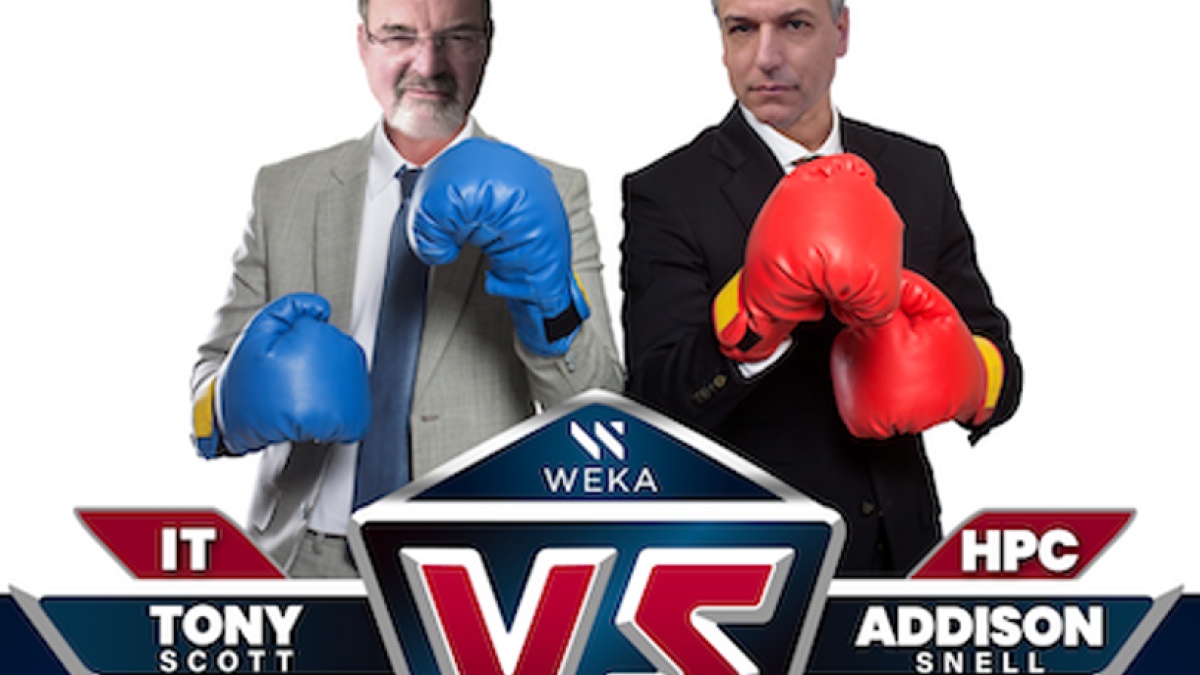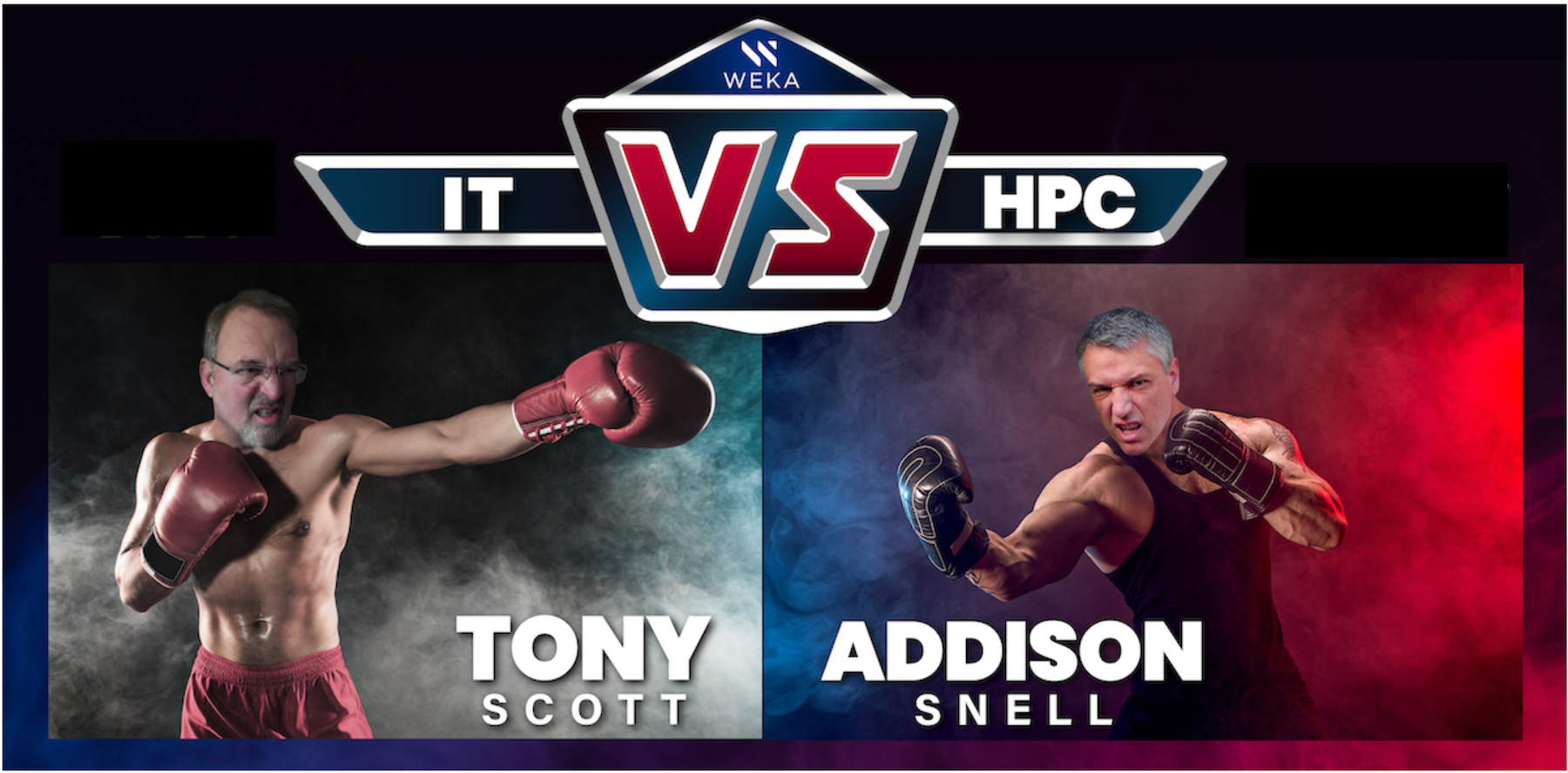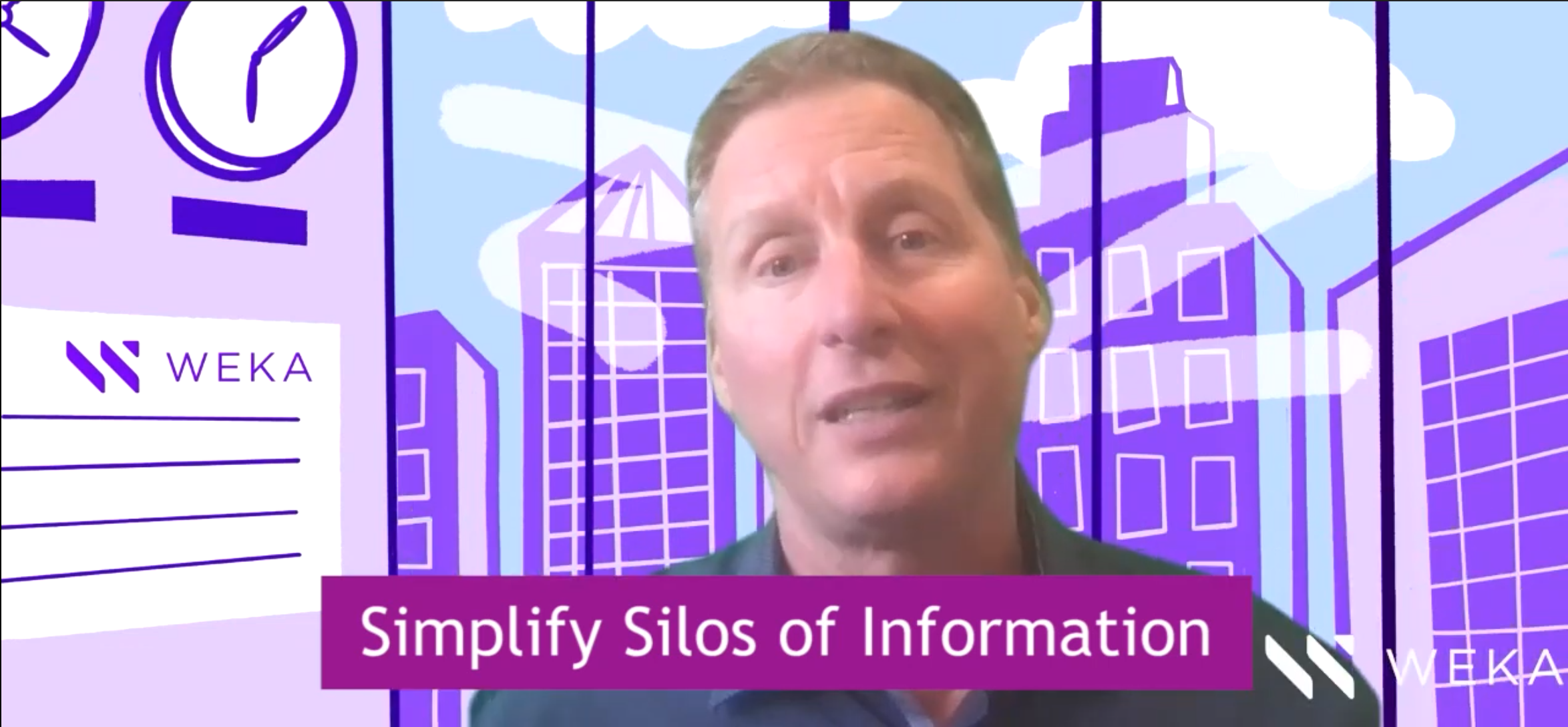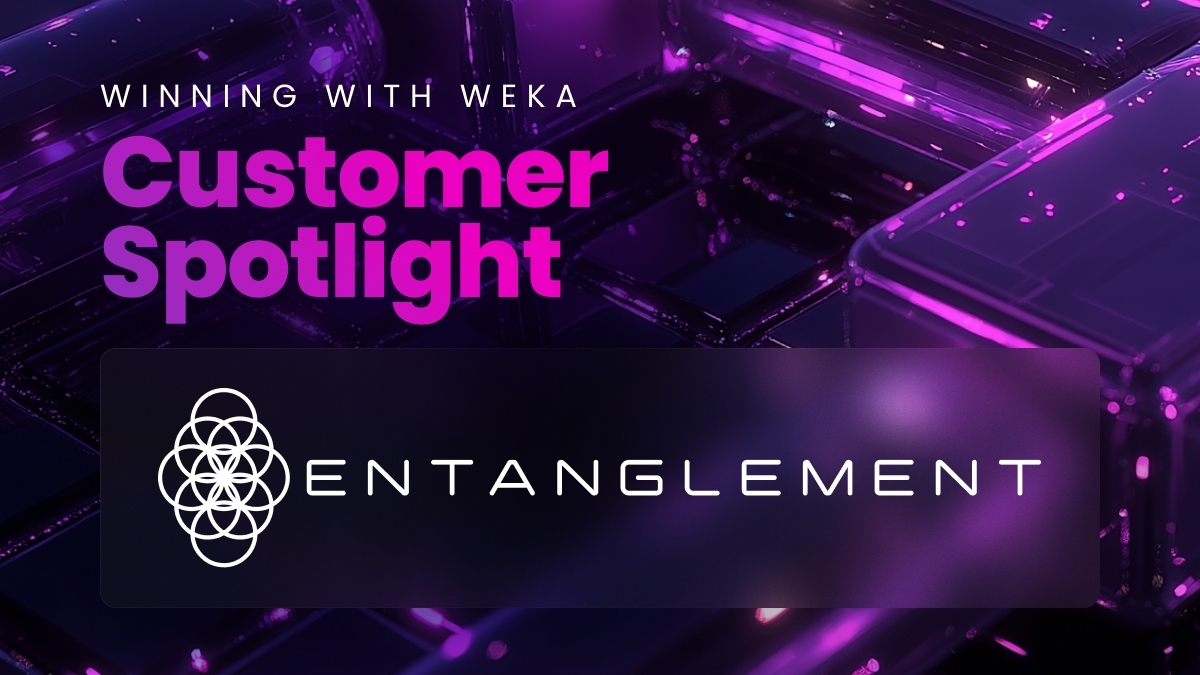Future of Data & Analytics with Tony Scott & Addison Snell – Part 1: The New Scalability

WekaIO recently hosted a webinar, “CIO Superhero vs HPC Warrior,” with two industry veterans: (1) Tony Scott, former CIO of the United States Federal Government, former CIO of Walt Disney Company and Microsoft, former CTO of General Motors, and now the Chairman of the Tony Scott Group; plus, (2) Addison Snell, a 25-year veteran of the HPC industry, a former analyst at IDC, and now the CEO of Intersect360 Research. This blog post is the first in the series that highlights the key points from this fun webinar that light-heartedly pits the heavy hitters against each other on various topics, with an interjection from WekaIO President and CRO, Ken Grohe, to offer some relevant Weka use cases after each round.
Round One: Scalability
This first post is about the “new scalability.” It’s widely acknowledged that things are not as they used to be, where scalability meant only the most bytes or the most flops. Here, Tony and Addison square off about what each one sees as the biggest challenges facing enterprises today.
Addison Weighs In
Scalability is no longer about the most cores, bites, or whatever unit of measure you want to apply to it, primarily because we’ve hit a diversity of workloads. There are many more things that an organization has to do now that they didn’t have to do before. You can still do all of your traditional enterprise operations, like ERP and CRM on the IT side of the house, or on the HPC side of the house it involves things like finding new pharmaceuticals, finding oil, and making cars safer. All those applications still exist. However, if you go back to the big data and analytics from eight to 10 years ago, all of a sudden we’ve got many new analytics applications to bring into the mix. Now the big emphasis is all on machine learning, but no one has tripled my budget! I still have to do all of the things I did before, plus I have to do analytics and machine learning, and they’re all part of the same environment. That’s just on the one hand.
On the other hand, the technology keeps changing, fueled by all of these new workloads. We brought in flash storage and all of these new tiers of storage. And now on the processor side you’ve got diversity as well, with not only competition among x86 processors, but Arm processors are coming into the mix with all types of accelerators, GPU computing, FPGAs, and custom coprocessors. I’ve got to manage all of those technologies and match them to all these different types of workloads. That’s the New Scalability. It involves how I get all of those to match up, and that’s before you even begin to talk about the cloud, which is the other major development here. So I’m left wondering, can I manage all of the different technologies, can I do it on premises and into the cloud and bring data in from the edge? To me, the New Scalability involves managing all of these things in an IT environment. It doesn’t matter if I can make it bigger if I can’t also have the flexibility to do all of the different things that I need and want to do.
Arm processors are coming into the mix with all types of accelerators, GPU computing, FPGAs, and custom coprocessors. I’ve got to manage all of those technologies and match them to all these different types of workloads. That’s the New Scalability.
Tony Joins the Match
At a high level, the biggest challenge that most enterprises face today is the market and business demand for rapid and complete digital transformation of their products and services, their customer interactions, their supplier interactions, and the whole ecosystem they deal with. That means all of the systems and underlying compute and all things that are putting intense pressure on the organization. Prioritization, time to solution, and costs are highly important factors that everyone has to manage, now and into the future.
One of the biggest challenges in that whole space is the silos, the islands of data, islands of automation, the islands of business process that in a digitally transformed world don’t make sense within our old boundaries. It doesn’t work if we have to apply the old application boundaries, organizational boundaries, and technical boundaries where data is siloed and everything is walled off from everything else. Digital transformation really means connecting across all of those islands and silos and inventing new business processes and new interactions with literally everything in the environment. Sometimes we don’t have the skill sets to do it, and sometimes there are technical barriers, but in the end there’s almost always good old fashioned work that needs to be done to overcome those challenges. But we’re looking through a new lense on the business and technology landscape and certainly the IT landscape. Through it all, within this environment there’s intense pressure for good cyber security and good privacy practices. Doing all of that with the Balkanized technical and business architecture that we’ve all grown up with over many years is a very expensive and complex task. This is where great technologies like WekaFS™ can help to fill the bill and help us to make progress faster than we are today.
One of the biggest challenges in that whole space is the silos, the islands of data, islands of automation, the islands of business process that in a digitally transformed world don’t make sense within our old boundaries
Addison’s Counterpunch
You shouldn’t get left behind by getting trapped in this old paradigm. The notion that we’re looking through a new lense is a good one, and these data silos are exactly the problem that people are facing. They acknowledge that they can’t advance on a project because the siloed environments are “just the way it is.” Sure, that’s a challenge, but if you let that hold you back from the kind of innovation that’s now available you’re just going to seed leadership class among all of your competition because the game keeps changing. You go back to these old ideas of data warehousing, which were about the need to consolidate data and add structure to it so that we could learn from it. Then big data and analytics came along, and it was an advancement to ask, “How can we consolidate our data and learn from it regardless of whether or not it has any structure?” Now we’re really upping the game with machine learning and asking how we can learn from the data regardless of whether it has any structure and regardless of whether or not we can consolidate it. If you’ve got silos of data, that shouldn’t be stopping you from making these advancements. That’s what I’m talking about with the New Scalability for new workloads. Business as usual just isn’t going to cut it.
Tony’s Response
As a former CIO for some pretty large enterprises, the one thing that scares me the most is tiny little silos of technology that won’t scale to the enterprise level. Every developer I’ve ever met has his own favorite tools and technologies, and they’d all land in my office and say, “I could go faster if you’d just let me do it my way,” and the thousands of “my ways” all added up to chaos and confusion. So I’m in favor of a lot of this stuff, but I think we also have to get consensus among a bigger group of people about which of the “my ways” we’re going to take to create a better highway into the future.
Ken’s Message: Weka Simplifies Silos of Information
The new challenge faced by the United States Federal Government is how do you simplify all of these different silos of information and consolidate them so that you can actually share the data, get things done, and be effective across the United States Federal Government? Also, how do you get all of these on-premises workloads ready for the inevitable move up to the cloud? Well, they approached Weka, and we provided a solution with the containerized environment of Kubernetes. What’s different about Weka is that we actually provided persistent storage for the Kubernetes environment, so the government can now use a containerized environment for their exascale workloads–no matter how demanding and how large they are–and they’re ready for the inevitable move up to the cloud. That’s a huge Weka Wow.
Stay tuned for Round Two in this blog series: The Promise of AI.








